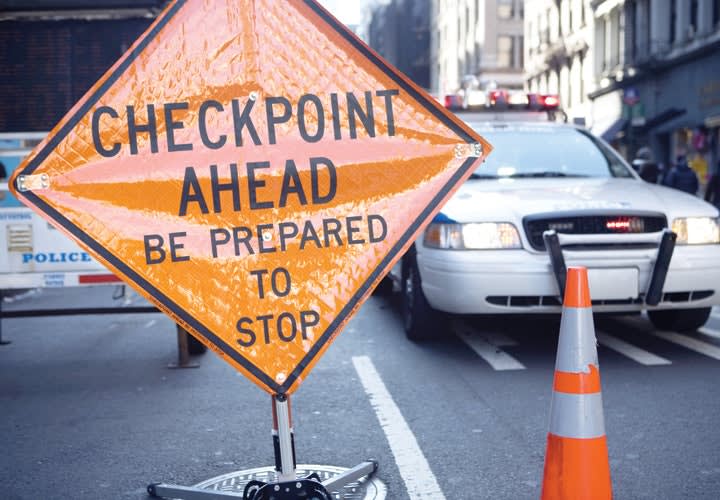Michigan State Police established a highway sobriety checkpoint at which every vehicle was stopped to see if drivers showed apparent signs of intoxication. If not, they went on their way (usually in 25 seconds or less); if they appeared impaired, they would be directed to the side for further investigation. Rick Sitz and other motorists challenged the legality of the checkpoints.
Examining the state's compelling need for sobriety checkpoints, the Supreme Court looked to statistics on deaths, injuries, and property damage caused by intoxicated drivers and said, "No one can seriously dispute the magnitude of the drunken driving problem or the States' interest in eradicating it." Balanced against the minimal intrusion on motorists passing through the checkpoints, the Supreme Court had no difficulty in finding that public safety concerns justified the brief detentions.
The court noted that checkpoint locations were chosen under predetermined guidelines, uniformed officers stopped every approaching vehicle, stops were very brief and police activity was limited to the detection of impairment (unless evidence of other wrongdoing appeared), and two of 126 questioned drivers were arrested for driving under the influence. The court held that the operation of the sobriety checkpoint in this case was "consistent with the Fourth Amendment." (Michigan v. Sitz)
Witness Checkpoints
One case, Illinois v. Lidster, concerned the constitutionality of setting up a checkpoint to try to locate witnesses to a recent, serious crime. An elderly bicyclist was killed by a hit-and-run driver just after midnight on a Saturday on a particular roadway. One week later, at the same place and time, officers set up a "witness checkpoint" to pass out fliers requesting information from potential witnesses who might be repeating the route from a week earlier, and might have seen something. Robert Lidster drove up to the checkpoint under the influence of alcohol and was arrested at the scene. He moved to suppress the evidence of his impairment on the ground that the checkpoint stop was unlawful.













